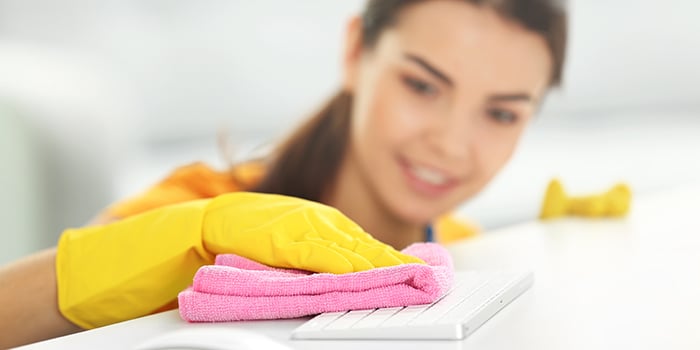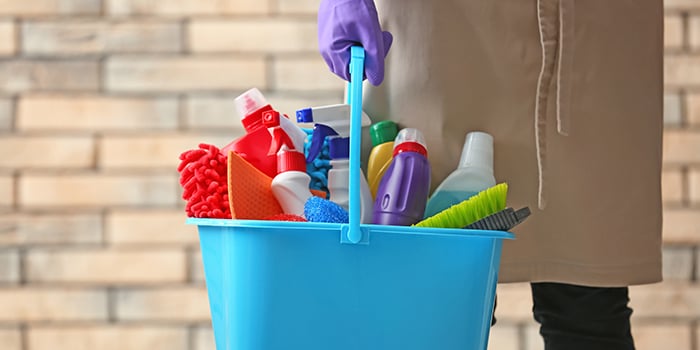
Republished from cleaninginstitute.org | August 30, 2012
Q: What is the difference between a disinfectant, an antimicrobial, and a sanitizing product?
A: Disinfectants and antimicrobials destroy pathogenic microorganisms. These two terms are used interchangeably. Sanitizers reduce the number of microorganisms to a safe level by killing them; typically, sanitizers kill 99.9% of these germs.
Any product that claims to kill bacteria or viruses must be registered with the Environmental Protection Agency, so look for products that have an EPA registration number on the product label. For Canadian products, look for the Drug Identification Number (DIN) or the Health Canada registration number.
Q: How do I know which product is best for my surface?
A: The best course of action is to read the product label carefully and purchase and use products as intended. Also, use common sense when considering the type of surface on which you’ll use the product — for example, you wouldn’t use spray products on electronics, as they could cause damage to the component or cause an electrical “short.”
Q: When a surface looks clean, does that mean it is probably germ-free, too?
A: No. According to the Centers for Disease Control and Prevention, disinfecting and cleaning are not the same. The tricky thing about germs is that you can’t see them. And while soap and hot water remove some germs from surfaces when you clean, they cannot kill all germs — in fact, they may even spread them around. To ensure that a surface is germ-free, use a disinfectant or sanitizing product. Be sure to follow the label directions, as many products need to “stand” on a surface for a period of time in order to kill germs.

Q: Are cleaning products safe?
A: A commitment to safety is a top priority from the time a company begins working on a new product and continues as long as the product is in the marketplace. Companies evaluate the safety of existing cleaning products by talking with consumers, reviewing scientific developments, and monitoring product use data that may affect the safety assessment process. Safety also lies in the hands of the consumer. In the real-world use of cleaning products, problems generally arise when they are improperly handled, used or stored. Consumers should read the product label, use cleaning products only as directed and store products properly and securely.
Q: What’s the difference in the words warning, caution, and danger on the product label?
A: CAUTION or WARNING are the most commonly used “signal words” for cleaning products. These two terms are interchangeable for household cleaning products, and mean that the product is not likely to produce permanent damage as a result of exposure. However, keep in mind that appropriate first aid should always be given in case of exposure. As always, read the label for first aid information.
DANGER indicates that accidental exposure to the undiluted product could produce permanent tissue damage; swallowing the undiluted product could cause damage to the mouth, throat and stomach; or the material could ignite if exposed to an open flame, heat or spark.
Remember the keys to safe and effective product use: always read the product label before using, and use the product only as intended.
Source: ACI Product Fact Sheet Hard Surface Hygiene: Disinfecting and Sanitizing Products - http://www.cleaninginstitute.org/clean_living/faqs_about_cleaning__disinfecting.aspx


